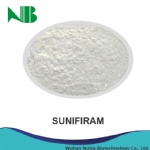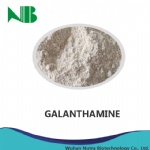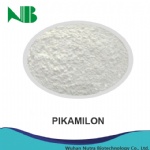Sunifiram
Product Description:
Product Name: Piperazine, 1-benzoyl-4-(1-oxopropyl)-
Synonyms: Piperazine, 1-benzoyl-4-(1-oxopropyl)-;SunifiraM;1-(4-Benzoyl-1-piperazinyl)-1-propanone;1-Benzoyl-4-(1-oxopropyl)-piperazine;1-(4-Benzoylpiperazin-1-yl)propan-1-one;1-Benzoyl-4-propanoylpiperazine;Sunifiram DM235
CAS: 314728-85-3
MF: C14H18N2O2
MW: 246.30492
SUNIFIRAM: WHAT IS SUNIFIRAM?
Nootropics are a category of drugs that are often referred to as “Smart Drugs.” This title is earned because these drugs have provided benefits in the areas of attention span, cognitions, recall and overall memory enhancements that can improve one’s mental performance. Sunifiram is one such drug. Unlike many of the drugs that fall under the heading of nootropics are all from the Racetam family except in the case of Sunifiram. Sunifiram is referred to as an ampakine because it gains its effectiveness through the increasing glycine receptor binding.
HOW DOES SUNIFIRAM WORK?
While the effects of Sunifiram show many positive aids in increasing acetylcholine levels, which can be extremely beneficial in many dementia and Alzheimer’s disease sufferers. However, studies have yet to determine if its effects can be predictable. As with many drugs, their effectiveness can differ from person to person. While many may reap great rewards from Sunifiram, others may not benefit as much. According to the researchers, it is a matter of individual needs, conditions, and lifestyle all plays a role. That said more research is necessary to determine the future applications of particular nootropic option. The effects of Sunifiram on the sufferers of Alzheimer’s disease have been most promising. Alzheimer’s presents as degeneration the cholinergic system, Sunifiram works to reverse that deficiency and improves the cognition over the short and long-term duration of treatment (Moriguchi & et. al, 2013). However, there are other studies, performed on mice, which appear to reverse the effects of amnesia. Mice whose memories were intentionally diminished were then given doses of Sunifiram, and their memory loss was improved.
SUNIFIRAM SIDE EFFECTS, BENEFITS, AND USAGE
Sunifiram is considered to be a safe drug with few or no potential side effects of concern. However, there are some minor side effects that can be mentioned, including headaches, anxiety, insomnia or sleeplessness, and nausea. All of these side effects are treatable and not considered a serious risk to anyone’s health. Because of its marketing as a brain drug and its notable lack of side-effects, the present concern is that people will seek the drug illegally and use the drug without need and in higher doses than would normally be prescribed. Because the drug mimics the effects experienced when one takes amphetamine and methylphenidate, which aid in promoting wakefulness many students are using the drug to improve overall test scores. Unfortunately, studies have yet to show if there is an addictive quality present when taken freely (Mullen, 2014).
That said studies are still being done to determine the overall safety, efficiency and effectiveness of Sunifiram. However, all current studies and preliminary data are showing that there are few side effects, and the treatment seems to be incredibly beneficial in the treatments of serious conditions, like amnesia, Alzheimer’s and Parkinson’s disease. Nootropics may not be the solution to boosting one’s brain power, especially without the advice and overseeing by a doctor, but its applications in aiding people with reestablishing, maintaining, and improving the memories of those who possess conditions that can strip their recall and be freed from some of the mentally debilitating aspects of these illnesses or injuries are important. In the end, the further research into Sunifiram and all the Nootropic drugs is worthwhile and potentially beneficial well into the future.
ADDITIONAL INFORMATION ON SUNIFIRAM
Sunifiram, DM-235, is derived from Piracetam but is not considered a Racetam class chemical due to the chemical structure of Sunifiram. Sunifiram is an ampakine that gains some effectiveness through the increase of the glycine receptor binding in regard to NDMA.
Sunifiram is a piperazine alkaloid that shares a chemical shape of both Unifiram and Sapunifiram. Sunifiram has been shown in a study that after taking it for 7 to 12 days, an increase in potentiation of NDMA receptors is seen. After words, Sunifiram begins to show positive improvement in AMPA receptors as well as acetylcholine (ACh) receptors. It shares a structure based off of Piracetam, although the major difference is that Sunifiram’s pyrrolidine backbone is left open after attaching a piperazine structure to it.
SUNIFIRAM DOSAGE
The average dosage is 7 mg, which can be administered up to three times per day, and higher doses have not proven to more or less effective. This ampakine nootropic is sold in capsules, powder, and tablet form.
Synonyms: Piperazine, 1-benzoyl-4-(1-oxopropyl)-;SunifiraM;1-(4-Benzoyl-1-piperazinyl)-1-propanone;1-Benzoyl-4-(1-oxopropyl)-piperazine;1-(4-Benzoylpiperazin-1-yl)propan-1-one;1-Benzoyl-4-propanoylpiperazine;Sunifiram DM235
CAS: 314728-85-3
MF: C14H18N2O2
MW: 246.30492
SUNIFIRAM: WHAT IS SUNIFIRAM?
Nootropics are a category of drugs that are often referred to as “Smart Drugs.” This title is earned because these drugs have provided benefits in the areas of attention span, cognitions, recall and overall memory enhancements that can improve one’s mental performance. Sunifiram is one such drug. Unlike many of the drugs that fall under the heading of nootropics are all from the Racetam family except in the case of Sunifiram. Sunifiram is referred to as an ampakine because it gains its effectiveness through the increasing glycine receptor binding.
HOW DOES SUNIFIRAM WORK?
While the effects of Sunifiram show many positive aids in increasing acetylcholine levels, which can be extremely beneficial in many dementia and Alzheimer’s disease sufferers. However, studies have yet to determine if its effects can be predictable. As with many drugs, their effectiveness can differ from person to person. While many may reap great rewards from Sunifiram, others may not benefit as much. According to the researchers, it is a matter of individual needs, conditions, and lifestyle all plays a role. That said more research is necessary to determine the future applications of particular nootropic option. The effects of Sunifiram on the sufferers of Alzheimer’s disease have been most promising. Alzheimer’s presents as degeneration the cholinergic system, Sunifiram works to reverse that deficiency and improves the cognition over the short and long-term duration of treatment (Moriguchi & et. al, 2013). However, there are other studies, performed on mice, which appear to reverse the effects of amnesia. Mice whose memories were intentionally diminished were then given doses of Sunifiram, and their memory loss was improved.
SUNIFIRAM SIDE EFFECTS, BENEFITS, AND USAGE
Sunifiram is considered to be a safe drug with few or no potential side effects of concern. However, there are some minor side effects that can be mentioned, including headaches, anxiety, insomnia or sleeplessness, and nausea. All of these side effects are treatable and not considered a serious risk to anyone’s health. Because of its marketing as a brain drug and its notable lack of side-effects, the present concern is that people will seek the drug illegally and use the drug without need and in higher doses than would normally be prescribed. Because the drug mimics the effects experienced when one takes amphetamine and methylphenidate, which aid in promoting wakefulness many students are using the drug to improve overall test scores. Unfortunately, studies have yet to show if there is an addictive quality present when taken freely (Mullen, 2014).
That said studies are still being done to determine the overall safety, efficiency and effectiveness of Sunifiram. However, all current studies and preliminary data are showing that there are few side effects, and the treatment seems to be incredibly beneficial in the treatments of serious conditions, like amnesia, Alzheimer’s and Parkinson’s disease. Nootropics may not be the solution to boosting one’s brain power, especially without the advice and overseeing by a doctor, but its applications in aiding people with reestablishing, maintaining, and improving the memories of those who possess conditions that can strip their recall and be freed from some of the mentally debilitating aspects of these illnesses or injuries are important. In the end, the further research into Sunifiram and all the Nootropic drugs is worthwhile and potentially beneficial well into the future.
ADDITIONAL INFORMATION ON SUNIFIRAM
Sunifiram, DM-235, is derived from Piracetam but is not considered a Racetam class chemical due to the chemical structure of Sunifiram. Sunifiram is an ampakine that gains some effectiveness through the increase of the glycine receptor binding in regard to NDMA.
Sunifiram is a piperazine alkaloid that shares a chemical shape of both Unifiram and Sapunifiram. Sunifiram has been shown in a study that after taking it for 7 to 12 days, an increase in potentiation of NDMA receptors is seen. After words, Sunifiram begins to show positive improvement in AMPA receptors as well as acetylcholine (ACh) receptors. It shares a structure based off of Piracetam, although the major difference is that Sunifiram’s pyrrolidine backbone is left open after attaching a piperazine structure to it.
SUNIFIRAM DOSAGE
The average dosage is 7 mg, which can be administered up to three times per day, and higher doses have not proven to more or less effective. This ampakine nootropic is sold in capsules, powder, and tablet form.
Links:
Copyright © Wuhan Nutra Biotechnology Co., Ltd. All right reserved















